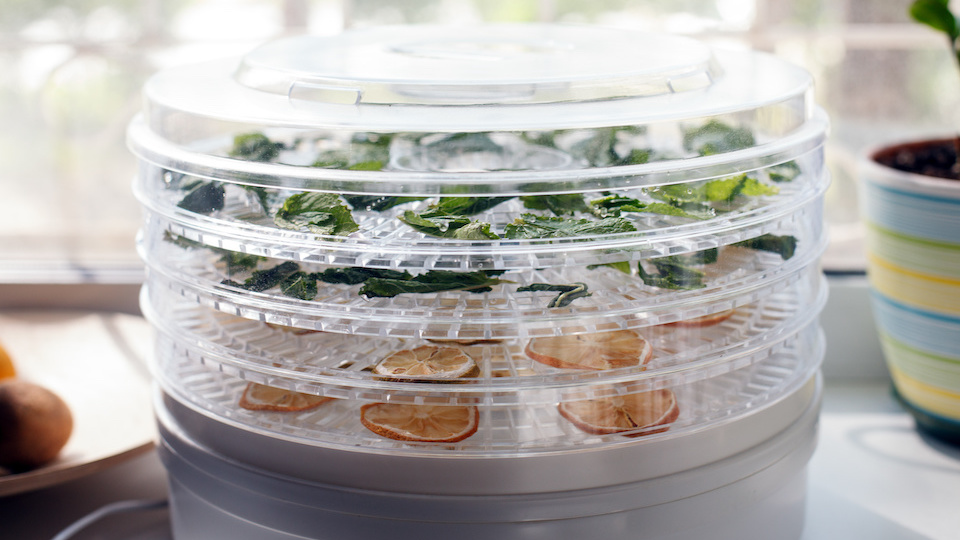Food preservation is an ancient technique that allows you to stockpile a large amount of food for a rainy day, or even a global health or economic crisis. Dehydration is easy once you get the hang of it and the food you preserve goes a long way! Read on to find out how you can get started saving food today.
So you want to be more sustainable? What better way to start than by dehydrating your own food and preserving it for a rainy day. Canning, of course, is still a great option, but many veggies lose their flavor when canned and fruit often gets mushy and unappetizing. Dehydrating preserves the flavor and nutrients of your favorite fruits and vegetables and is often associated with less of a learning curve than canning. However, getting started with dehydrating can prove a little intimidating, so let this helpful article be your guide on your journey towards sustainability. Here are a few of our favorite foods to dehydrate and what you need to know to get started.
Choose your dehydrator
The price and quality of dehydrators vary widely, with some having automatic shut-offs, temperature gauges, timers, and other bells and whistles that make the process a snap. Others, usually the cheaper options, don’t have as many extra functions but will still perform adequately and dehydrate your food safely. Keep in mind, these less advanced options will require a little more attention on your part and may be more time-consuming. However, a basic dehydrator will cost around $30 while others could run upwards of $400 so be sure to do your research before making your selection. If you don’t want any financial investment, your oven could act as a dehydrator, but it isn’t as effective and will require you to be at home all day for safety reasons.
Know what you can make
While dehydrating fruits and veggies is the most common use of this handy kitchen appliance, its uses stretch far beyond traditional banana chips and encompass a wide range of food groups. For instance, many people use their dehydrator to make homemade jerky or even flatbreads and crackers from scratch. Cookies, fruit bars, fruit leather, and even yogurt drops are also common snack options that are great for taking on the road or the trail or storing in your emergency shelter. Invest in a dehydrator cookbook or look online for easy recipes to make the most of your shiny new dehydrator.
Fruits
Virtually any fruits can be sliced and dehydrated overnight or through the day and turned into delicious, dehydrated snacks. Incorporate them into trail mix or enjoy alone as a pre or post-workout snack. When you are first starting out, it is a good idea to stick to basic fruits that you know will taste delicious. Try to shop locally whenever you can or buy in bulk when the fruit is on sale to make big batches.
Here are a few of the easiest (most delicious) fruits to dehydrate:
- Apples
- Pineapple
- Apricots
- Mangos
- Bananas
- Strawberries
- Raspberries
- Blueberries
Enjoy dehydrated berries in wholesome cereal such as oatmeal or granola, or use to add a little texture to your Greek yogurt. Dehydrated bananas are an excellent addition to homemade trail mix, especially when combined with dark chocolate chips. Many yummy baking recipes call for dehydrated fruit, so be sure to do some research and find out what else you can cook with your long-lasting, dried fruit. One of our favorites is fruit leather.
All you have to do is puree three cups of any cooked fruit of your choice in a blender (apples and apricots work well) with a little water until it forms a spreadable paste. Then, add it to a piece of parchment paper on the dehydrator tray, spreading it until it is about ⅛ inch thick. Dehydrate at 140 degrees Fahrenheit for about 6-12 hours or until it has reached the desired consistency. Check it at the 6-hour mark and every hour after that. If you want it a little sweeter, you can add some honey while you are pureeing the fruit.
Vegetables
Snacking on veggies can be a bit of a chore as they don’t often taste super good without being steamed or added to something like a salad. If you want to find a super healthy, portable midday snack that you can take to the office, dried veggie chips are the way to go. Since these vegetables aren’t cooked, they retain all of their natural nutrients and are just as healthy and technically still raw, which means that you can eat them if you are following a raw food diet.
Here are a few of our favorite veggies to dehydrate:
Remember, cut them into ¼ inch-thick strips or bite-sized pieces to ensure proper dehydration.
- Carrots
- Potatoes
- Kale
- Tomatoes
- Mushrooms
- Onions
- Peppers
Onions turn slightly crispy and make a great addition to soups or salads, while kale chips form a yummy snack. Sprinkle them with a little bit of sea salt and enjoy!
What are your favorite foods to dehydrate? Let us know in the comments below!
-Susan Patterson



